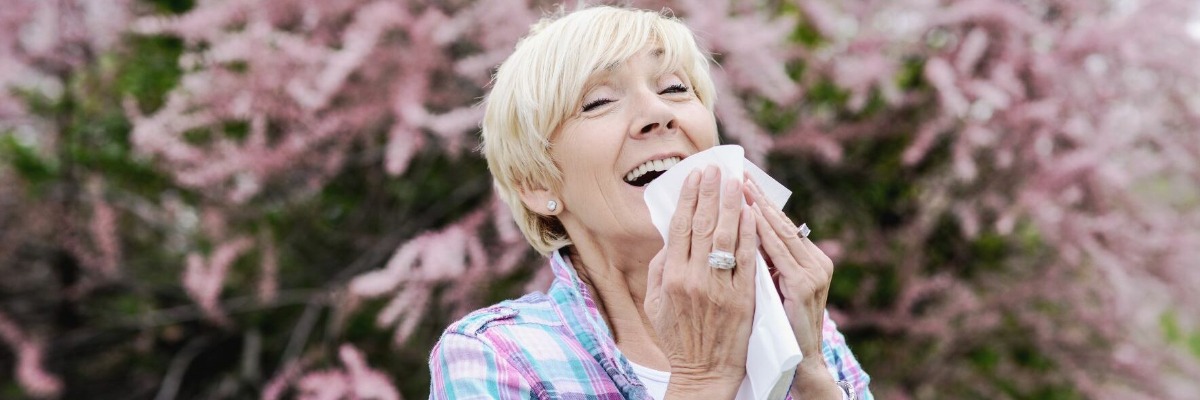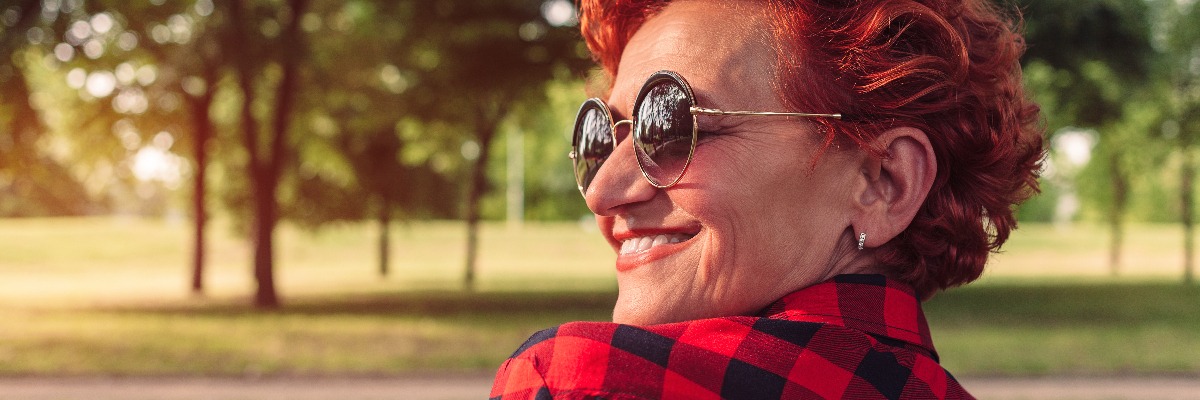How Does Hayfever Season Affect Dry Eye Sufferers?
For many of us, the joy of spring also equals hayfever season, which can mean watery, itchy eyes.
For Dry Eye sufferers, this season can be doubly difficult, as pollen allergies combined with Dry Eye symptoms can cause extra discomfort.[1]
This blog explains what Dry Eye is, how allergies can affect it, and what treatment you can seek if you are suffering from chronic itchy, irritated eyes in hayfever season.
Index:
What is Dry Eye Disease?
Dry Eye Disease is a chronic condition, where patients experience itchy, gritty, irritated or watery eyes.[2] One in four people in the UK suffer from Dry Eye, and whilst it is usually not very serious, the symptoms can be frustrating and impact people’s quality of life.[3]
Why can Dry Eye symptoms sometimes feel worse in spring?
Many people who suffer from Dry Eye also suffer from allergies, so there is much crossover between the two. Existing symptoms such as redness, soreness, burning or stinging, itchiness, and blurry vision are more likely to get worse in the spring when pollen allergies are most prevalent.[4]
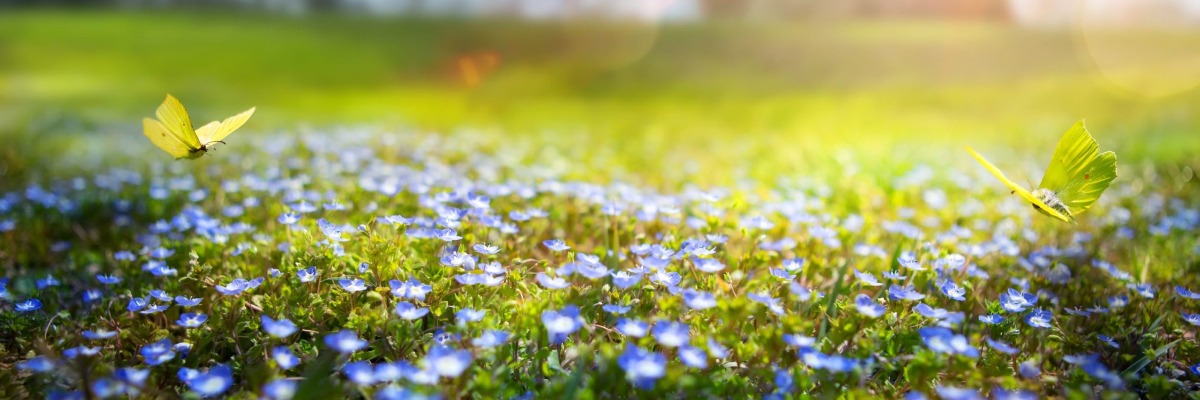
When is hayfever season?
According to a study by Kleenex UK and Allergy UK, 49% of the UK population suffer from hay fever.[5] This means that hayfever season impacts a huge amount of people.
Hayfever season is usually between late March and September, when the pollen count is high. It is even worse when it’s warm, humid and windy.[6]
You can be aware of the pollen count by looking on websites like BBC Weather. These can help you to plan ahead to be more cautious when hayfever season comes.
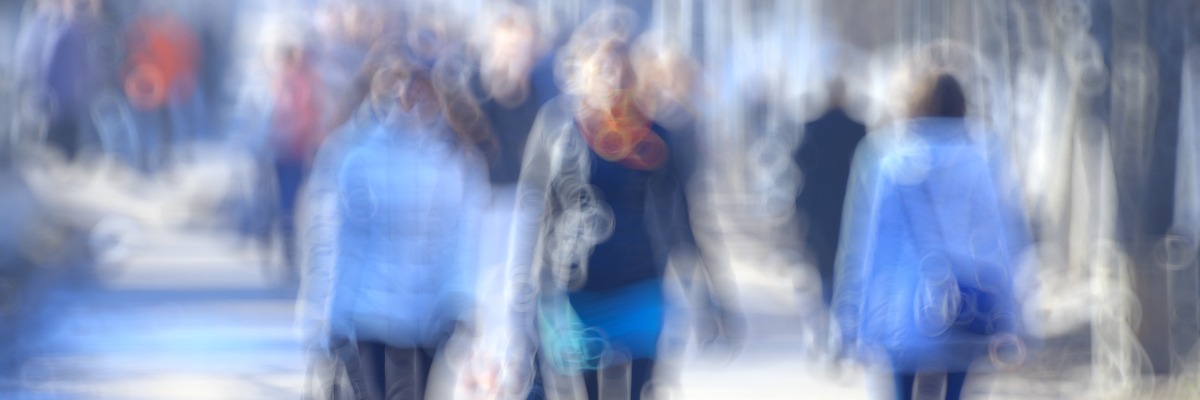
Can hayfever cause blurry vision?
Yes! In most cases of hay fever, your eyes will be very watery. This might result in blurry vision, but this should soon pass.[7] There are also lots more symptoms of hay fever, which you can find below.
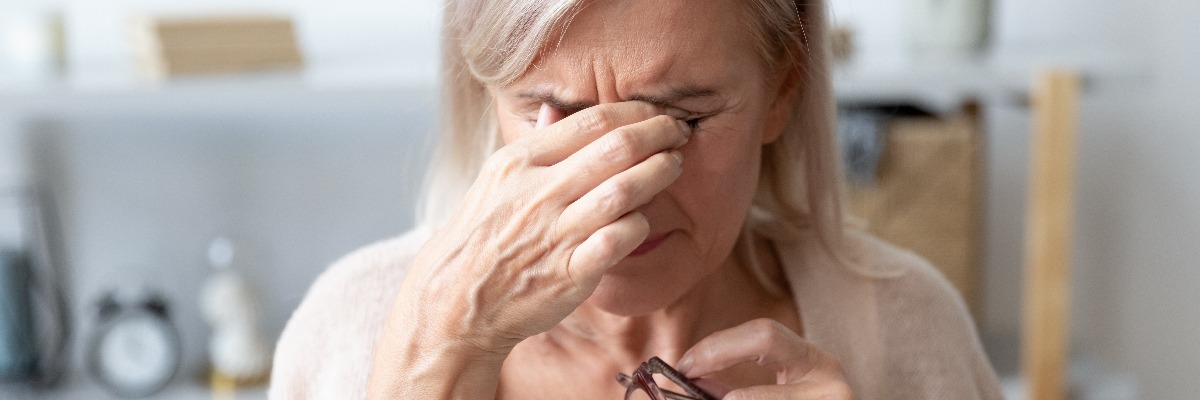
Do I have hay fever eyes or Dry Eye?
If you’re experiencing eye discomfort, its hard to tell whether you have Dry Eye Syndrome or hay fever eyes. The main difference between hay fever eyes and Dry Eyes is that itching is more intense with hay fever. There are also more physical factors that come with hay fever eyes, like sneezing and having a runny nose. [8]
Dry Eye symptoms are:
- Itchy eyes
- Burning eyes
- Achey eyes
- Eyes that feel heavy
- Eyes that feel sore
- Eyes that feel gritty or sandy
- Red eyes
- Blurry eyes
- Fatigue
- Eyes that are sensitive to light
- Eyes that are more watery than normal
Hay fever eyes and hay fever symptoms include:
- Intensely itchy eyes
- Red eyes
- Watery eyes
- Sneezing
- Runny nose
- Blocked nose
- Itchy throat, mouth and ears
- Cough
- Loss of sense of smell
- Facial pain
- Ache in head and ears
- Tiredness and fatigue [9]
If you’re still struggling to find out the cause of your dry eye, visit our blog: 6 Causes of Dry Eye
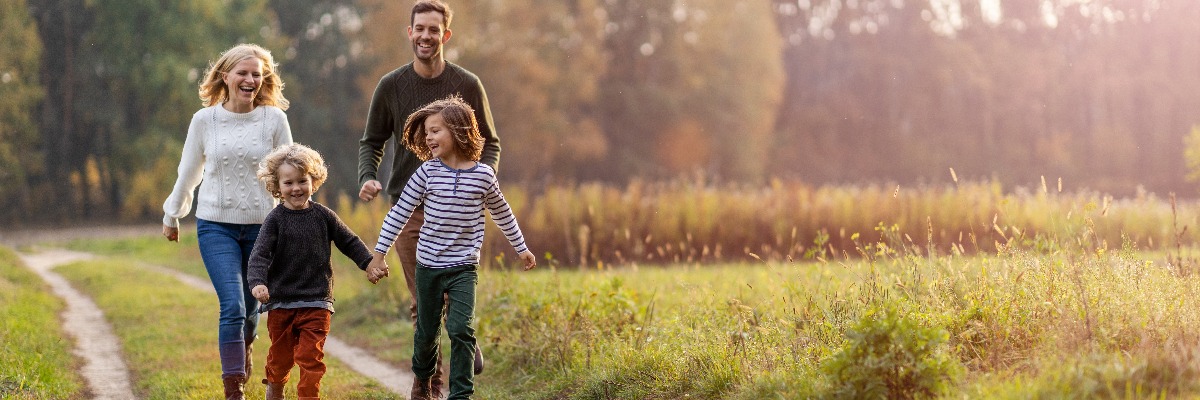
What can I do to ease Dry Eye and hay fever eye symptoms?
There are many ways that you can ease your symptoms. Here are some of them:
- Avoid triggers
- Take antihistamine eye drops
- Use eye drops
- Use a compress
- Don’t keep fresh flowers
- Use Vaseline
- Shower
- Don’t walk on grass
- Change your pollen filters
- Clean your house
- Keep the outside, outside
- Avoid smoke
- Don’t dry your clothes outside
-
Avoid triggers
It may sound simple, but if you know that you suffer from pollen, dust or pet allergies, do your best to avoid irritants. Pollen allergies are hard to avoid when going outside in the spring, but checking the pollen count on apps such as Apple Weather or BBC Weather can be a good idea.
Wearing wrap-around sunglasses outside during hayfever season also helps to mitigate Dry Eye symptoms.[10]

-
Take antihistamine eye drops
Antihistamines can be a good way to minimise allergy symptoms. However, some oral antihistamines can actually dry the eyes out even further, making Dry Eye symptoms worse.[11]
Therefore, many experts recommend topical allergy treatments, such as antihistamine gels or eye drops, as they can reduce irritation more effectively.
If your allergy symptoms persist and become severe, it’s a good idea to consult your GP.
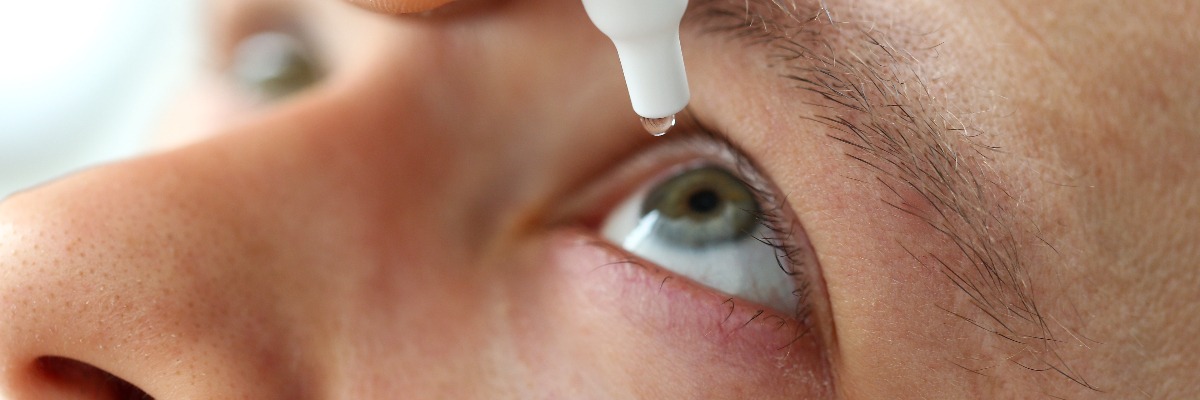
-
Use eye drops
Eye drops can soothe eyes that are itchy and irritated from allergies like hayfever, and Dry Eye Disease. Artificial tears are one type of eye drop that is readily available over the counter and can help maintain moisture on the outer surface of your eyes.[12]
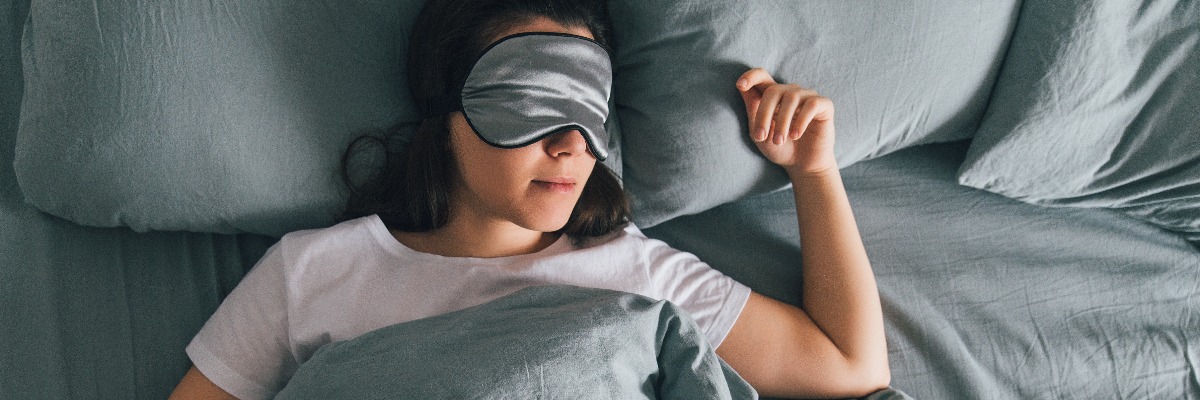
-
Use a compress
To soothe your eyes, use an eye compress such as MeiboPatch® twice a day. Apply it to your upper face, over your eyes, for a break from the elements.[13]
You can buy MeiboPatch® here: MeiboPatch®

-
Don’t keep fresh flowers
If you have hay fever, you should avoid keeping fresh flowers in your house.[6] Even if they are cut, they can still release pollen into the air and irritate your eyes. [14] If you would still like to have a bunch of flowers in your home, there are many fake plant options out there to help you decorate.

-
Use Vaseline
The NHS recommends this treatment! If you put Vaseline around your nostrils, it can trap pollen before you can inhale it. Just make sure that you take it off at the end of the day, before you go to bed.[6]
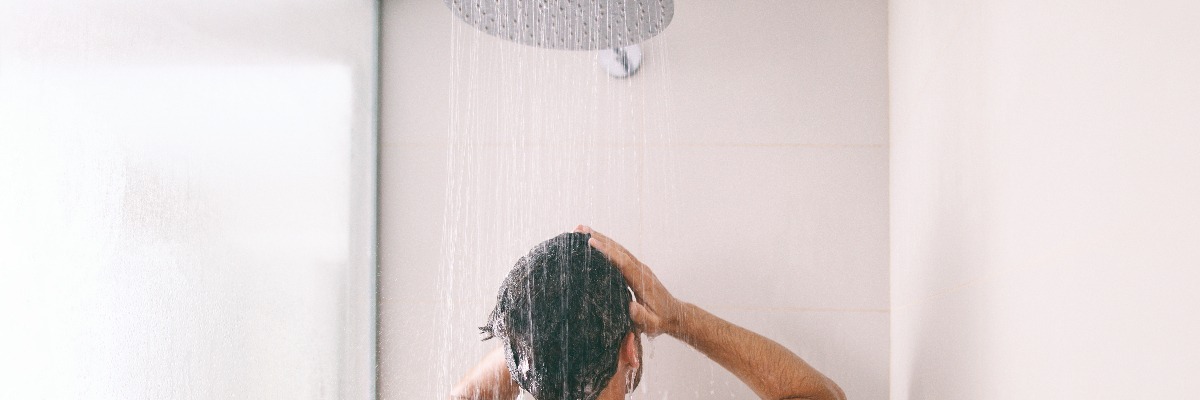
-
Shower
Pollen can cling to your clothes and skin, so you should always shower and wash your clothes immediately after being outside. This can get rid of these allergens, to prevent a hay fever flare-up at night.[15]
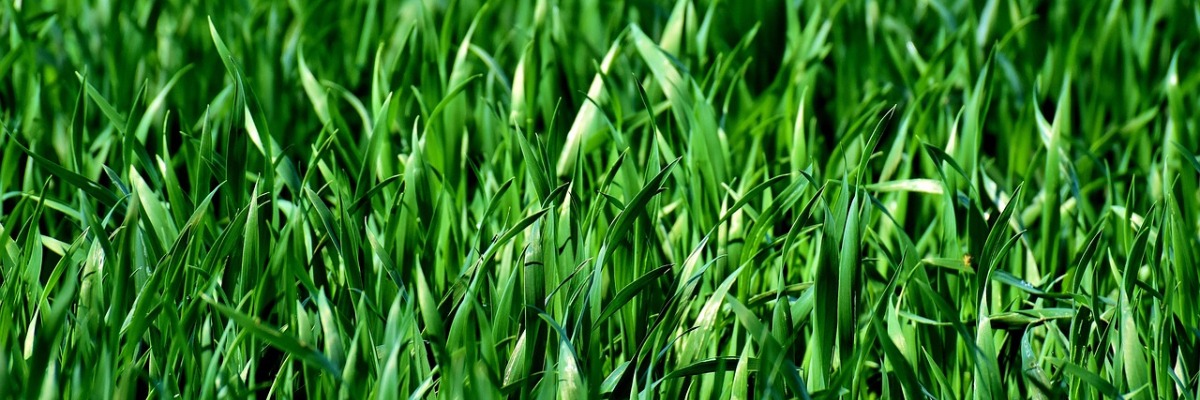
-
Don’t walk on grass
If you have hay fever, you should avoid grass at all costs! Although keeping lawns short can lower the chances of grass releasing pollen, this isn’t a responsibility you should take on yourself.[16] To avoid any allergy triggers, you should let someone else mow your grass for you and avoid going outside whilst this is underway. You should also avoid walking on grass, to prevent getting pollen stuck to your shoes and bringing it into your house.[6]

-
Change your pollen filters
A pollen filter goes in your air vents and cleans the air that comes into your car, rejecting dirt, dust and exhaust fumes, as well as pollen. Many modern cars come with filters built-in, but most vehicle manufacturers recommend that you get a mechanic to change them every two years – or more if you live in a very pollen-heavy area. It is a good idea to change your pollen filter in winter so that you’re ready for hayfever season ahead of time.[17]
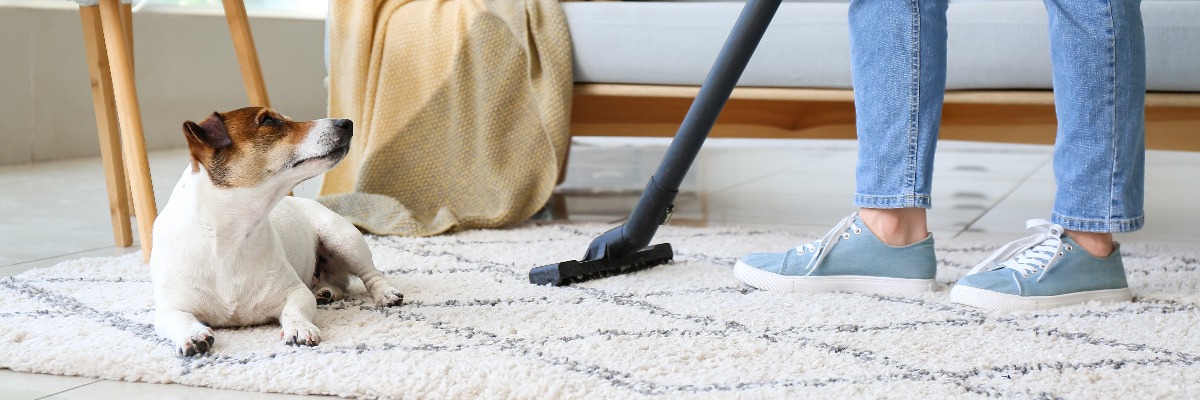
-
Clean your house
As well as keeping yourself clean, you should also make sure that your house is clear of any allergens that could irritate your hay fever eyes. The NHS recommends that you vacuum your house regularly and dust around with a damp cloth.[6] This can remove dust and allergens from your carpets and surfaces.[18] Lloyds Pharmacy recommends that you should try to use a vacuum that has a HEPA (high-efficiency particulate absorbing) filter, which can clear the air thoroughly.[19]
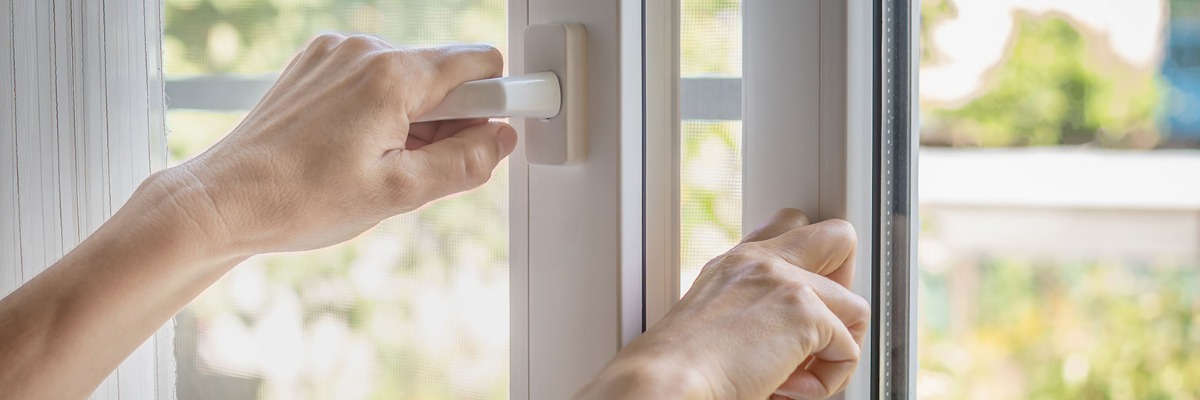
-
Keep the outside, outside
It can be tempting to open your windows as spring creeps in, but this can invite allergens into your home. Therefore, it’s best to keep your windows and doors shut at this time of year.[6]

-
Avoid smoke
Cigarette smoke is a huge irritant of Dry Eye Disease, as the harmful chemicals break down the layer of tears in our eyes. This causes eyes to be dry and irritated.[20] As hay fever can dry out eyes too, smoke can make them even drier.
If you do smoke, it is a good idea to stop smoking. Non-smokers should also avoid smoking areas and other places where second-hand smoke is prominent.
For more information on smoking and Dry Eye, visit our blog: Smoking and Dry Eye

-
Don’t dry your clothes outside
If you suffer from extreme hay fever and Dry Eyes, it is best to dry your clothes inside, no matter the weather. This is because pollen can stick to clothing, sheets and more.[21]
If you have to put your washing outside, Professor Adam Fox, Paediatric Allergist working at a leading London teaching hospital and the President of British Society for Allergy & Clinical Immunology, suggests that you should hang your washing out at times when the pollen count is low. He states that pollen rises early in the morning, and falls back down at dusk, so it is best to put washing outside in the middle of the day.
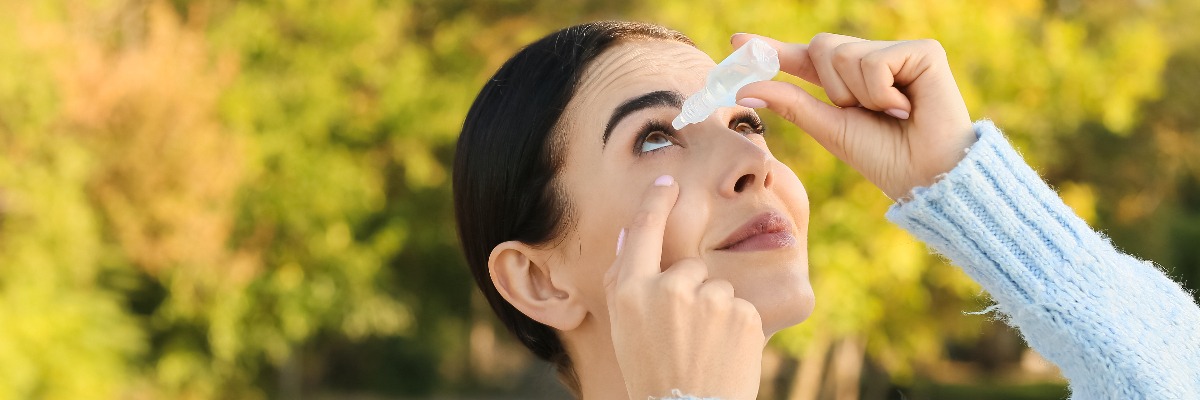
What are the best eye drops for hayfever?
Eye drops are a great way to help soothe and treat hay fever eyes. We have a range of eye drop recommendations just for you.
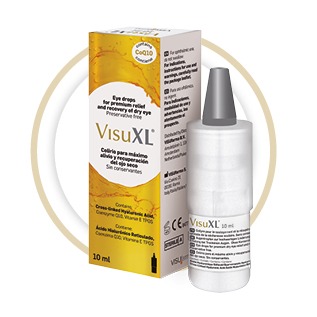 VisuXL® Eyedrops
VisuXL® Eyedrops
Use up to two eye drops a day for long-lasting relief from Dry Eye flare-ups caused by hay fever.[22]
You can buy these eye drops here: VisuXL® Eye Drops
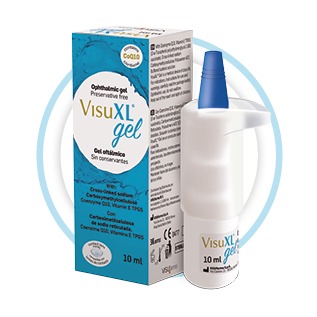 VisuXL® Gel
VisuXL® Gel
Gel eye drops, like VisuXL® Gel, can provide a thicker moisture barrier, helping to lubricate your eyes for up to 12 hours. They can be used day and night, to help with irritation.[23][24][25]
You can buy this eye gel here: VisuXL® Gel
For more information on Dry Eye and hay fever, follow us on social media. In most cases, the best way to treat dry eyes, Also known as dry eye syndrome, is to use eye gel or eye drops. VisuXL Gel® is a preservative-free smart gel lubricant for dry eye syndrome. It provides comfort in a bottle with it’s long-lasting lubrication properties giving 12-hour dosing with just one drop and is suitable for both day and night use. VisuXL® is a preservative-free eye drop lubricant for dry eye syndrome. Due to its unique ingredients, VisuXL® will help you recover from eye surgery, an injury or persistent damaging dry eye. VisuEvo® is a preservative-free eye drop that prevents excessive evaporation of the tear film. Its unique formula contains omega-3 essential fatty acids, Vitamins A and D and ultra-filtered phospholipids that facilitate tear film presentation and control evaporation. All three products are contact lens-friendly and can be used for 180 days after opening.
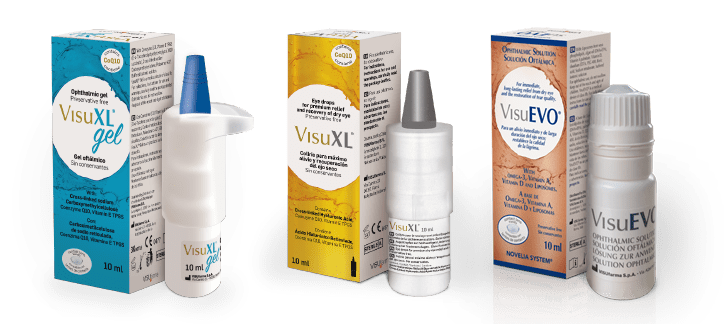
References
- Davis, J. A., Ousler, G. W., III, Langelier, N. A., Schindelar, M. R., Abelson, R., & Abelson, M.B. (2006, May). Seasonal changes in dry eye symptomatology. Investigative Ophthalmology & Visual Science, 47(13), 280. Accessed January 2022.
- NHS England. ‘Dry Eyes’. Accessed January 2022.
- Wimpole Eye Clinic. ‘Why Are My Eyes So Scratchy and Dry’. Accessed January 2022.
- Kumar, N., Feuer, W., Lanza, N. L., & Galor, A. (2016, August 1). ‘Seasonal variation in dry eye’. Ophthalmology, 122(8), 1727-1729. Accessed January 2022.
- Kleenex. ‘Take Control of Your Hay Fever This Summer’, 04/21. Accessed February 2024.
- NHS England. ‘Hay fever’, 04/02/21. Accessed December 2022.
- Essilor. ‘How does hayfever affect your eyes’. Accessed December 2022.
- Dean McGee Eye Institute. ‘How to Tell the Difference Between Dry Eye and Allergies’. Accessed December 2022.
- Nidirect. ‘Hay fever’. Accessed December 2022.
- Mangan, B Richard. ‘When Allergy and Dry Eye Collide’, Review of Optometry. Accessed January 2022.
- Ousler GW 3rd, Workman DA, Torkildsen GL. ‘An open-label, investigator-masked, crossover study of the ocular drying effects of two antihistamines, topical epinastine and systemic loratadine, in adult volunteers with seasonal allergic conjunctivitis.’ Clin Ther. 2007 Apr;29(4):611-6. Accessed January 2022.
- Alaina, L. ‘Artificial Tears: How to Select Eye Drops for Dry Eyes’, Mayo Clinic. Accessed Jan 2022.
- MebioPatch Instructions For Use (IFU). Accessed December 2022.
- Air Things. ‘What is Pollen?’. Accessed December 2022.
- Forefront Dermatology. ‘6 Tips to Help Control Your Hay Fever Symptoms’. Accessed December 2022.
- Medical News Today. ‘How to identify a grass allergy’, 01/06/2020. Accessed December 2022.
- Big Box Cars. ‘Why Do You Need to Change Your Pollen Filter?’. Accessed December 2022.
- SharkClean. ‘5 Cleaning Tips for Hay Fever Sufferers’. Accessed December 2022.
- Lloyds Pharmacy. ‘How to minimise the symptoms of hay fever’, 07/07/22. Accessed December 2022.
- Jyothi Thomas, George P. Jacob, Lekha Abraham, and Babu Noushad. ‘The effect of smoking on the ocular surface and the precorneal tear film’, Australas Med J. 2012; 5(4): 221–226. Accessed December 2022.
- National Allergy. ‘Laundry Advice For Allergy Sufferers’, 02/01/14. Accessed December 2022.
- VisuXL Eye Drops Instructions For Use (IFU). Accessed December 2022.
- Dresden, Danielle. ‘Some of the Best Gel Eye Drops for Dry Eyes for 2022’, Medical News Today, 13/10/21. Accessed January 2022.
- VisuXL Gel Instructions For Use (IFU).Accessed December 2022.
- Brancato R, Fiore T, Papucci L, et al. ‘Concomitant Effect of Topical Ubiquinone Q10 and Vitamin E to Prevent Keratocyte Apoptosis After Excimer Laser Photoablation in Rabbits’. J Refract Surg 2002; 18: 135-9. Accessed January 2022.



